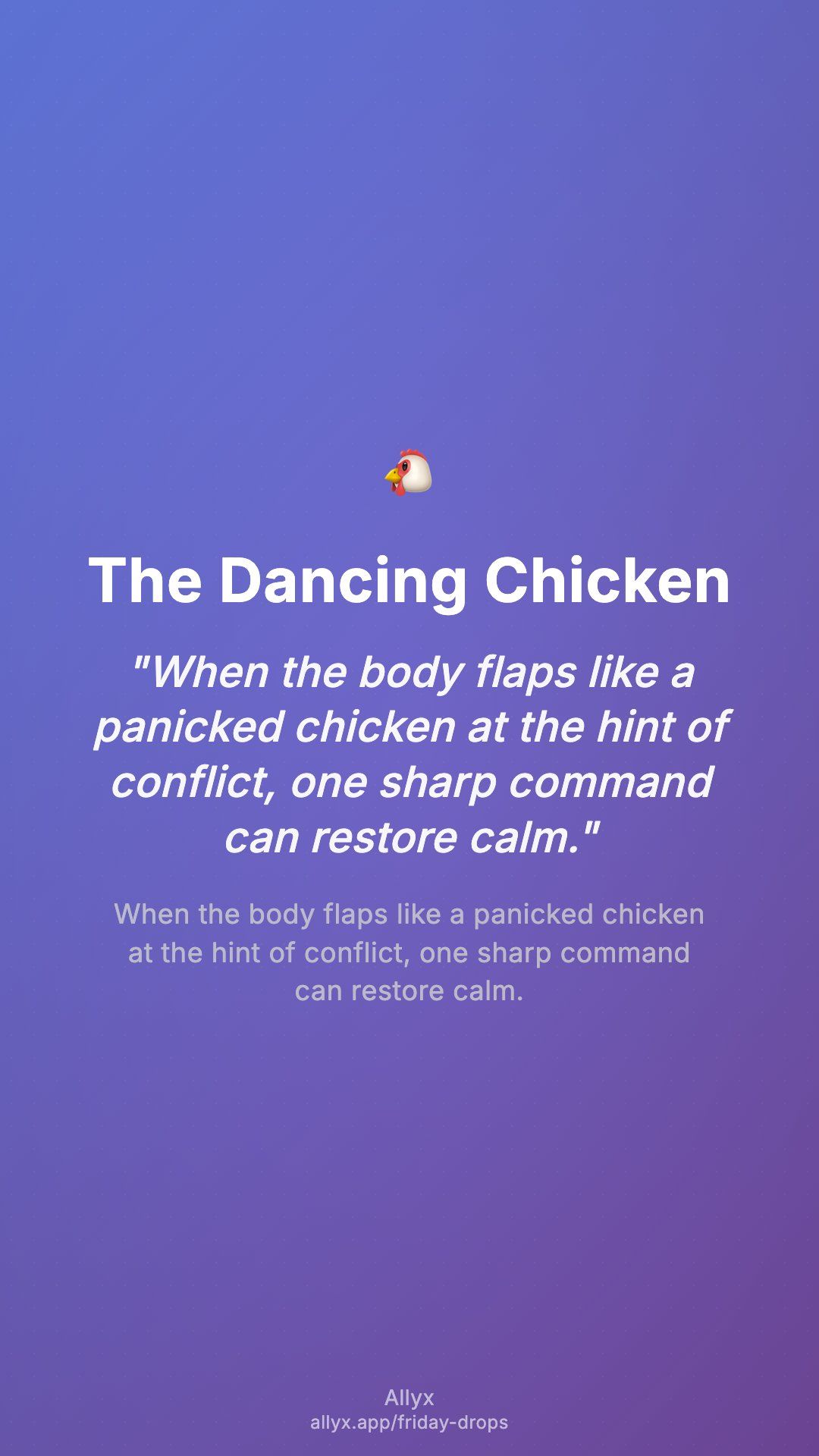The Dancing Chicken
When the body flaps like a panicked chicken at the hint of conflict, one sharp command can restore calm.
Thursday, September 18, 2025
Metaphorical Narrative
Picture a chicken in a marketplace. Someone drops a basket, and instantly the chicken explodes into a wild dance — wings flapping, feathers flying, sprinting in circles. No predator, no fire, no storm. Just noise, and the chicken is convinced the world is ending.
That’s what the conflict alarm does in the body. A tone of voice, a pause in conversation, a glance — and suddenly the chest tightens, the pulse jumps, as if disaster has already arrived. The body dances like the chicken, even when nothing is wrong.
Core Insight
These alarms come from subconscious cue-matching: the nervous system sees conflict where there may be none, because old scripts told it to be ready. The chicken inside mistakes sound for threat, movement for danger.
The phrase “GET OUT” works as a reset switch. It doesn’t soothe or explain — it commands. The chicken is shown the door. The body returns to stillness, and executive function steps back into the center. You’re no longer dancing with feathers; you’re standing with choice.
Saturday Experiment
When a disagreement alarm starts flapping:
- Say firmly (aloud or in mind): “GET OUT.”
- Notice the chicken stop its dance — the chest loosens, the body steadies.
- Anchor the reset with one calm breath.
Optional: log it in your Tracker as Dancing Chicken → Ejected.
Sunday Reflection
When the chicken danced this week, what shadow or sound set it off?
How did the body feel in the moment before and after the command?
What proof appeared that the alarm belonged to the chicken, not to “I”?

